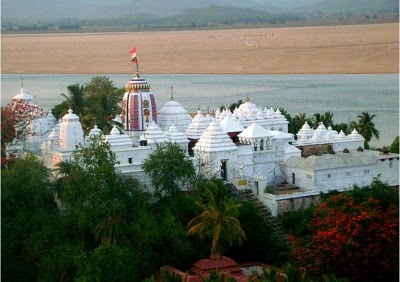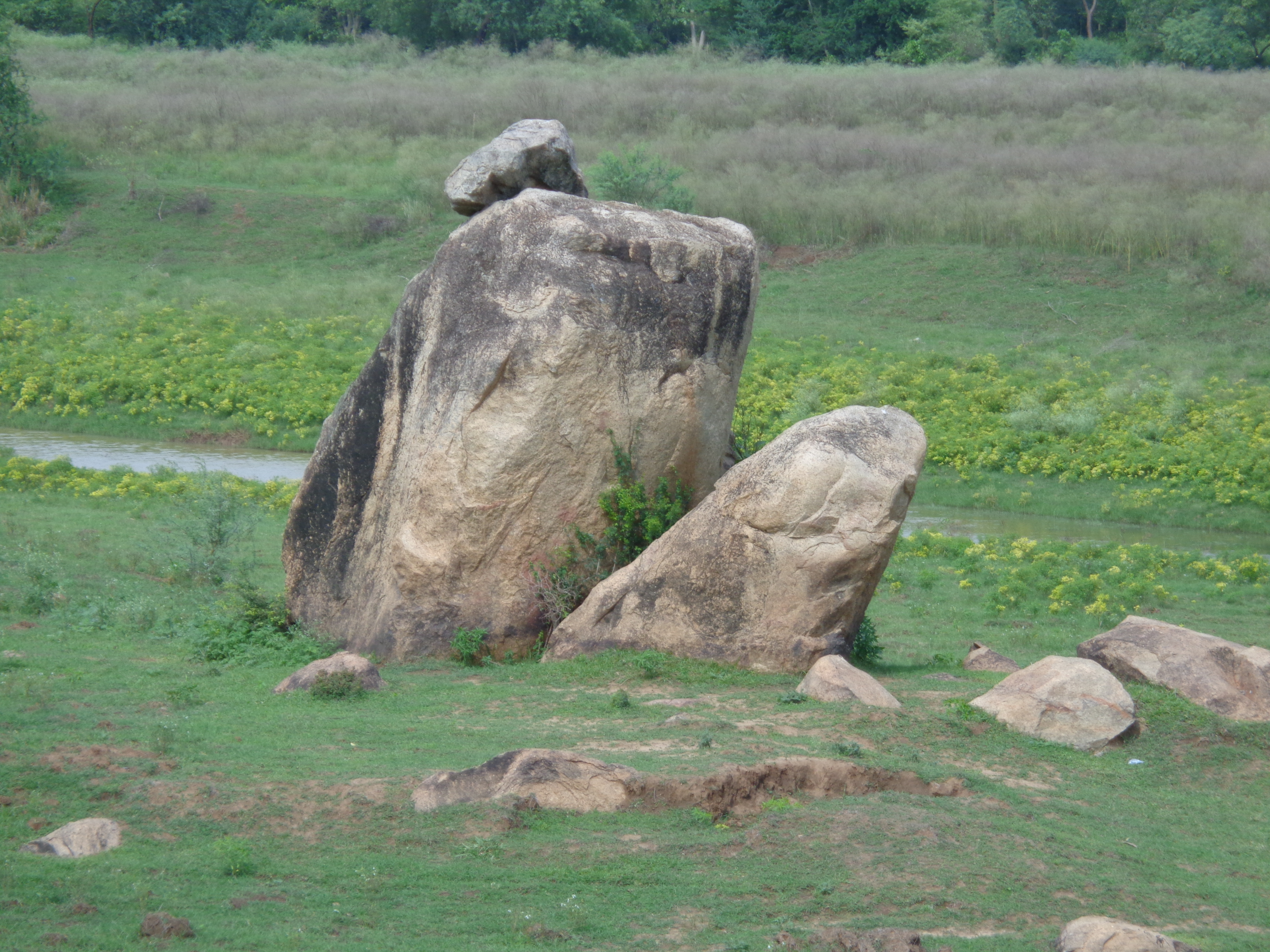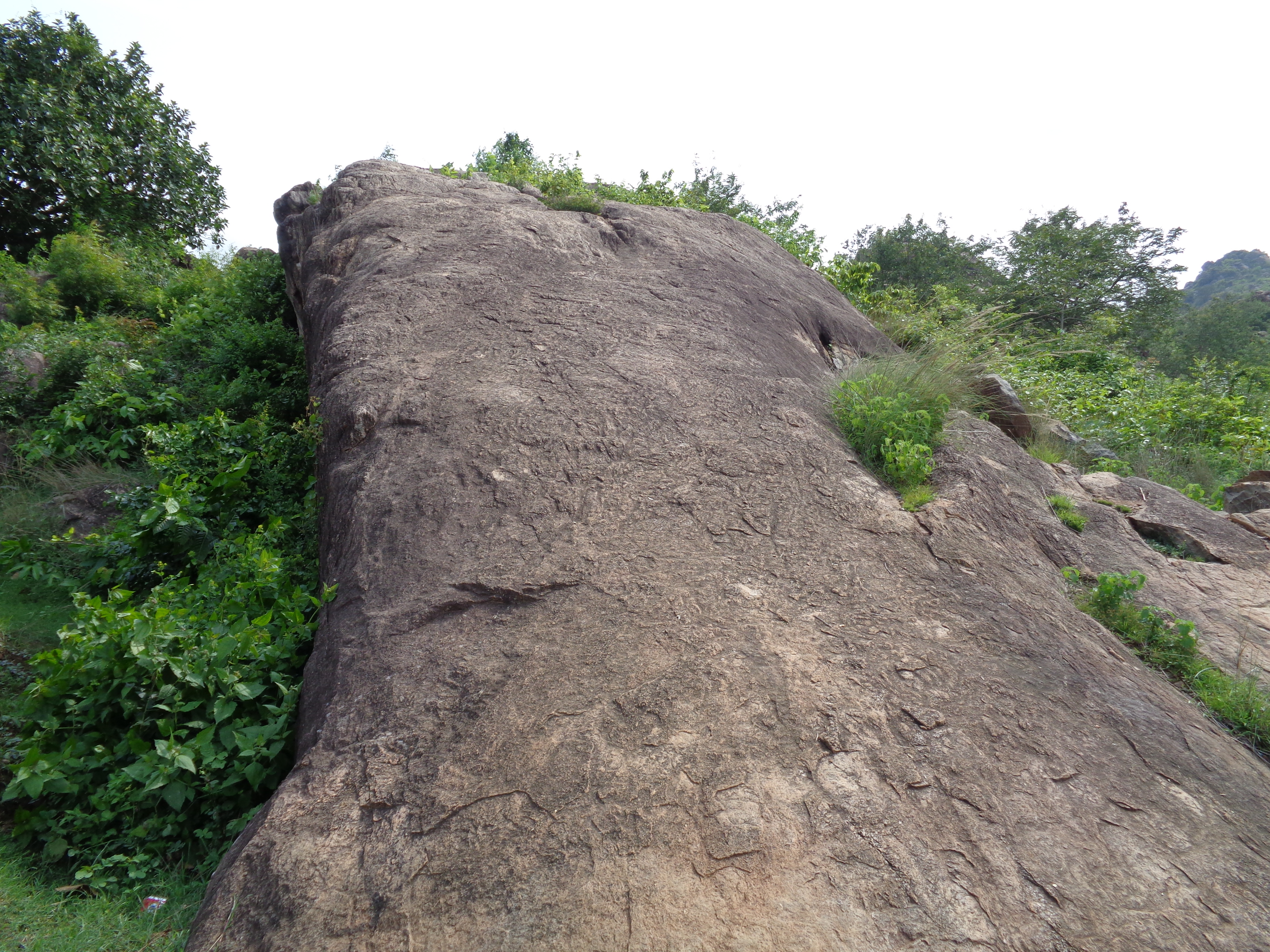


Standing elegantly on the banks of the river Mahanadi, in the district of Nayagarh in the state of Odisha in India, Kantilo is famous for the temple of Lord Nilamadhaba on top of the twin hills (Brahmadri and Niladri) with a surrounding of green forests. Lord Nilamadhaba occupies a prominent position in the cult of Lord Jagannath. There is a permanent flow of holy water from the feet of Lord Nilamadhaba. The movement of Lord Siddheswar on accordance with the journey of Sun from North to South; Goddesses Narayani, Shwashan Chandi; and the mountain Shulia are some other highlights of this magnificent village. Kantilo has the most popular picnic spots in Odisha and is 100 kms away from the capital Bhubaneswar and 33 kms from Nayagarh town. Bhaimaekadashi in the month of Magha is celebrated here in grand scale with funfair and gaiety. You can visit this sacred village looking into the aerial map, the Orgin of the Jagannath cult. If you have enjoyed the Sunset view at Mount Abu or Kanya Kumari (Cape Camorin), then do not miss to watch the Sunset at the top of the Brahmadri hills. Several theories have cropped up through ages to justify the place name of Kantilo (କଣ୍ଟିଲୋ). The last part of the word, 'Lo' may be a reduced form of the Sanskrit word 'Lava'. 'Lava' refers to low and deep river bed which helps in navigation. Colloqually this is spoken as 'Lo'. We can cite some other place names ending in 'Lo' like Sailo, Sarilo, Jharilo etc. The other part of the word 'Kanti (କଣ୍ଟି))' refers to old and broken part of the bell metal. Production of bell metal commodities play a key role in the native trade of Kantilo. Some other suppositions refer to the fact that the nearby hills and mountains of Kantilo are full of thorny bushes (Kanta, କଣ୍ଟା) and thorny fruits (Kantei Koli, କଣ୍ଟେଇ କୋଳି). However this supposition seems not very convincing. 'Kanti କାଣ୍ଟି' is a race name which still exists at Kantilo. They were a trading class (Vaishya Vanika) previously known as 'Sadhavas'. They were entrusted with the duty of collecting taxes from the navigators and traders passing through Kantilo on the river Mahanadi. They were also acting as official in charge of the Ghat. The race name 'Kanti' is derived from their official designation called 'Kanta Adhikari'. 'Kanta' refers to the instrument of measurement. The weighing balance used by these Kanta Adhikaris was known as 'Kanti'.
Lord Jagannath is the mascot of Odisha. Centuries of myths, legends and history have gone into the making of the cult of Jagannath. According to legend, Lord Jagannath's original form is Nilamdhaba placed at Kantilo. In this original form, the presiding deity of Orissa was worshipped at Kantilo, a primordial God, by Sabaras, a Pre-Aryan and Pre-Dravidian tribe of the Austric linguistic family.
It all started in a small cave in the Brahmadri hills situated on the banks of Mahanadi, which is known as Kantilo of Nayagarh district today. Here, Biswabasu the local Sabra Chief worshipped Kitung, as the God was known in the Sabara dialect. According to the Puranas, the deity was originally worshipped in the form of a black tong image know as "Nilamadhaba". The Daru Murty (wooden image) came much later.
At some stage of his or her life, every Odia person has heard the beautiful legend of Nilamadhaba. According to myth, Nilamadhaba appeared in a dream of Indradyumna, the legendary King of Malawa. To see the God, the king consulted his Pundits who informed him that the Nilamadhaba was being worshipped some where in the forest of Utkal. It fell upon Bidyapati to trace out the God. After walking bare foot for several days through the thick forest of hill tracks along Mahanadi Bidyapati finally landed in Kalipali a village, Biswabasu - the tribal Chief played the perfect host to his guest. The beautiful "Lalita", daughter of his host, besotted Bidyapati. The two got married with the blessings of Biswabasu.
One day, Lalita confided in her husband the fact that her father worshipped Lord Nilamadhaba in a cave deep inside the forest. Bidyapati realizing that his mission was nearing completion beseeched her to take him there but on one condition that Bidyapati would have to go there blind folded.
On the day of reckoning, he carried a handful of mustard seeds and kept dropping on the way at regular intervals. The advent of monsoon saw the mustard plants form the path leading right up to the cave. Soon after Bidyapati went back to Malawa and narrated his experience to King Indradyumna. And both of them immediately set out to invade Utkal. But while on his way, he was told by a divine voice that Nilamadhaba had disappeared and was floating in the Sea. Graciously acceding to the King's request, Biswabasu pardoned his son-in-law and agreed to come to Puri.
There the floating divine image behaved like a log of wood and came ashore. The idols of Lord Jagannath and others were made out of that log and placed in a tiny temple. The present one came up sometimes in the 12th Century. The cult of Jagannath too has undergone its share of changes down the ages.
Located near the confluence of three rivers-Mahandi, Kuanria and Kusumi the temple structure is like the Jagannath temple of Puri. It stands on the
right bank of Mahanadi. On the left, the hill ranges merge with the hazy gray horizon. This place is an ideal spot for tourists who are religious and
nature lovers. Like to read more about the mysterious statue of Lord Nilamadhab,
then click OrissaReview_June2004 and OrissaReview_June2009. The technical details on the archaelogical point of view, you may find from the studies of 'Indira Gandhi National Center for the Arts, Janpath, New Delhi' on Nilamadhab Temple. It is worth reading a poem on Lord Nilamadhab
Nilamadhab Chautisha.
ଗୀତ -
କଣ୍ଠ - ଭିକାରି ବଳ
ସଙ୍ଗୀତ -
ନୀଳମାଧବ ହେ ଘେନବାରେ ମୋ ମିନତୀ
ଚରଣତଳେ ମୁଁ ଶରଣ ପଶୁଛି
କରୁଣାକର ଶ୍ରୀପତି |୦|
ତୁମେତ ଗଢିଛ ଏ ନୀଳଆକାଶ ଗଢିଛ ଏ ବନଗିରି
ଦେଇଛ ଫୁଲରେ ଜାତିଜାତି ରଙ୍ଗ ଦେଇଛ ସୁବାସ ଭରି
ତୁମରି ଆଦେଶେ ଆତଜାତ ଜୀବ
ତୁମ ବିନା କାହିଁ ଗତି |୧|
ମହାପ୍ରଭୁ ତୁମେ ଦୟାର ସାଗର ତୁମରି କରୁଣା ବଳୀ
ମହାମୂର୍ଖ ସିନା ବୋଲାଏ ପଣ୍ଡିତ ପଥର ଭାସଇ ଜଳି
ଶ୍ରୀଚରଣେ ହରି ଏତିକି ଗୁହାରି
ରହୁ ପଦେ ସଦା ମତି |୨|
Evening in the top of hill Himadri has somewhat extra charming and spectacular. You can enjoy the cold breeze from the river side and sun set in the west hill top. The boats in the river as well as the long bridge view at long distance. The crimson red sun set view is worth watching and taking photos for your memory lane. For this you have to on the sides of Mahabir Hanuman temple. As the sun deeps, the bells rings in the Main Shrine. It is time to have a darshan of Lord Nilamadhab and His Sandhya Alati.
From His portico, you can have view of Bhattarika temple, bank of river Mahanadi, the greenery of Khaparmal. In totto, if you are a devotee come to Kantilo, if you are a lover of nature, then do not forget to visit Kantilo, if you are fond of picnic, then Kantilo welcomes you. There are many positive points that attracts you to Kantilo. This village, is not only a pilgrimage, but a source of artists, technicians, handicrafts, charted accountants, doctors, engineers, teachers, professors, scientists, adminstrative officers (OAS, IAS), Bank Officers, skill labours and journalists etc. etc. This village is not behind in politics and army as well. She has deployed his sons at borders for her safety, sent MLAs for her developments and had taken pains to bear the loss of her inhabitants as shahids (freedom fightetrs) during British period.
Kantilo Panchayat consists of 25 wards in Khandapara Assemby Constituency and Cuttack Loksabha Constituency. The names of these wards are Majhisahi Patna(Deula sahi), Fakir Atibuddhi Patna(Keuta Sahi), Chhamun Patna (Tanti Sahi), Hatmunda Patna, Baurisubuddhi Patna(Gauda Sahi), Krishneswar Patna(Thodia Sahi), Khuda Behera Patna(Kansari sahi), Madhaba Chaudhury Patna(Uppar Sahi), Bapuji Nagar(Andhar Munda), Hadi sahi, Krushna Chandrapur Patna(Marei Kana), Narendrapur Patna(Tiara Sahi, Tala Sahi), Majhi Sahi, Panu Sahoo Patna, and Mundiasahi Patna.
Handi Crafts: Bell-metal, an alloyed form dates back to the Charaka Sanhita in 400 A.D. The process was a heat and beat one using on a white stone platform. Through the ages, the craft persons of Kantilo, specialized in manufacturing Bell - Metal utensils using the formula of Charaka, a famous Ayurvedic scientist in Indian culture who has given the proportion of copper and tin to be mixed to obtain the Bell - metal alloy. In Odisha, metal crafts were patronised and encouraged by kings during the 11th century for decorative use in their palaces, temples and in social rituals.



Bell-metal is most attractive with its soft surface and golden tint. A very ancient metal, it is costlier and requires great skill on the part of the craftsman as each object is shaped by hammering the hot metal lump into delicate and beautiful forms. Bell- metal plates, tumblers and bowls never tarnish or react to weak acids like citrus fruit and are longer lasting than steel. The rich golden colour improves with age and food stored in it remains fresh and hygienic for a long time. A unique feature of Bell-metal products from Kantilo is that right from the making of the alloy to the finished product; everything is done under one roof by a group of three or four craftsmen.
The alloy, containing 85% copper and 15% tin, is heated and beaten into shape. The inside is then scraped to give it a golden glow, the outside is left dark. Ayurveda recommends serving and eating in Kansa (Bell metal as it is called in local Odia language) for nutritional values.
A small, select group of gifted Puri craftsmen also persevere with the traditional craft of making brass icons. Elsewhere in the state, in small places such as Behrampur and Belguntha (in Ganjam district), Tarva (Bolangir district), Chandanpur, Phulbani, and Kantilo are scattered some 15,000 families who specialise in producing a variety of brass and bell metal craft objects, which exhibit extraordinary craftsmanship. In Kantilo, the craftsmen fashion beautiful utilitarian and decorative objects such as plates, ashtrays and bells out of white metal. About 230 tribal families produce prized dhokra metalware items-boxes, lamps, figures of deities-by the cire perdue or lost wax method.
How to go: Frequent long route Bus services are there from Cuttack, Puri, Bhubaneswar, Nayagarh and Brahmapur, Narasinghpur etc. The nearest international airport as well as Railway Station is Bhubaneswar. Recently, in July/August 2017, Nayagarh Town Railway Station is in function for local trains from Khurdha Junction. Kantilo is now well connected by a double lane State Highway to State Capital Bhubaneswar, Narsinghhpur, Bolangir, Boudh etc.
Where to Stay: As it is a village, there is no Hotel to stay at present. But, there is a Panthanivas (Tourist Rest House organised by the Department of Tourism, Govt. of Odisha), and some Boarding Lodges by local people. A Yatri Niwas (Traveler's Rest House) is also providing shelter for tourists. No advanced booking is necessary. The rooms are provided by first come first serve basis.
Education: As of 2001 India census, Kantilo had a population of 8728. Males constitute 51% of the population and females 49%. Kantilo has an average literacy rate of 72%, higher than the national average of 59.5%: male literacy is 80%, and female literacy is 64%. In Kantilo, 11% of the population is under 6 years of age. The followings are the major educational institutes.
Journalists:
Water Resources: The rivers Mahanadi and Kamei mainly supply water to Kantilo. The local water supply is pumped from river Mahanadi.
Cultural Programmes: There are many cultural programmes connected with festivals. Besides, there many other programmes conducted around the year.
Health Care: Kantilo Primary Govt. Hospital, Post-Kantilo, 752078, Odisha.
Police Station: Kantilo Out Post, Phone No.: 06757-235041
Petrol Pump: Near Bapuji Park.
Bank:
Near by Attractions:




 As the mythical story is described above that Lord Nilamadhaba was worshiped by a tribal leader Vishwabasu in a tiger cave in side deep forest. He used to pass a river from his home to reach Him. To strengthen this believe that there was a tribal village near by Kantilo just after the river Kamei, pilgrimage of Lord Nilamadhaba, some archaelogical findings have been found in Dhangadi pahada of Dhanchangada village. The findings are preserved under the Archaeological Survey of Odisha. The authensity of these findings with that of Shabar King Vishwabasu and the period of worship of Lord Nilamadhaba is to be verified. Still Kantilo is locally accepted as the second Shrikshetra. The local people have started worshiping at the top of the Dhangadi hill.
As the mythical story is described above that Lord Nilamadhaba was worshiped by a tribal leader Vishwabasu in a tiger cave in side deep forest. He used to pass a river from his home to reach Him. To strengthen this believe that there was a tribal village near by Kantilo just after the river Kamei, pilgrimage of Lord Nilamadhaba, some archaelogical findings have been found in Dhangadi pahada of Dhanchangada village. The findings are preserved under the Archaeological Survey of Odisha. The authensity of these findings with that of Shabar King Vishwabasu and the period of worship of Lord Nilamadhaba is to be verified. Still Kantilo is locally accepted as the second Shrikshetra. The local people have started worshiping at the top of the Dhangadi hill.
Snana Purnima is the day the deities are bathed by 108 pitchers of water brought from the well near Sitala temple in the precincts of the Jagannatha temple. The deities Jagannath, Balabhadra and Subhadra bathe, dress up in the Gajanana or Ganesha Vesha and even their daily food offering or Bhogalagi is done in full public view on the Snanamandapa. Their remains no virtual difference between the devotees and their Lord. This day deemed to be the birthday of the Lord Jagannatha also accounts for the traditions followed before the Ratha Yatra.
The last five days of Kartika month, Panchuka, Lord Nilamadhab takes different beshas. 'Boita Bandana Utsav' in Odisha is celebrated on the auspicious day of Kartik Purnima or Kartik Purnima. People in Orissa celebrate 'Boita Bandana Utsav' to recall their maritime past. Boitas were ships that were built in ancient Odisha during the period of Kalinga empire. Ancient Odia merchants, called Sadhabas used the boitas to travel to distant lands such as Bali, Java, Sumatra, and Borneo, Sri Lanka, Malaysia, Vietnam, Persia, China, Africa and Greece for trade and cultural expansion. They used to start their journey on the auspicious day of Kartik Purnima (Full Moon Day). People in Odisha celebrate that day by floating boitas made of Banana branches and other materials in the river, ponds and seas in the wee hours of Kartik Purnima and then take holy dip in the water. The 'Bali Yatra' or 'Bali Jatra' lasts for a period of three to four days. It's an important festival or fair for people of Odisha.
This summer Festival of Lord Nilamadhab falls in April-May on Akshaya Trutiya i.e, the 3rd day of the bright fort night of the odia month of Baishakha. This auspicious day also marks the beginning of the construction of the Rathas, chariots for the ceremonial sojourn of Jagannath, Balabhadra and Subhadra to the Gundicha Temple on the day of car festival. This day also the farmers start process of cultivation by scattering seeds in their cultivated lands. 'Chandan Yatra', literally, Sandalwood paste festival, indicates the worshiping of the deities with sandal mixed water. Chandan yatra is spanned for 21 days. Everyday the representative images of the deities Madan Mohan, Laxmi and Saraswati(Biswadhatri) are taken in a procession to the famous Chandan pokhari. The Har Parbati, accompany Madan Mohan (the representative of Lord Nilamadhab) to the Chandan pokhari. In a gorgeously decorated boat Madan Mohan, Laxmi and Saraswati, and Har Parbati are placed . The deities enjoy an evening cruise and various models of worship in the pictureseque puskarini with the accompaniment of music and dance. On the last day of the festival 'Bhaunri Yatra' is performed. The procession start up from Singhadwara to puskarini amid Hymn, bhajan, kirtana, mridanga, ghanta etc. The traditionaly decorated vimana carrying the deities are carried to their destination. The sacred vimanas takes rest on the shoulders of the professionally earmarked viman badus.Throughout their journey thousands of devotees throng to cover the glimpse of the yatra,offering puja & pankti bhoga to the deities. All along the way to puskarini the conventional huge wooden sheds or chamundiya were erected enabling rest for the deities. Besides these, devotees carry chatris or the umbrellas made by the skilled pipili people projecting there of the rich art and craft of the city. Thousands of people are seen taking a dip in this holy tank considering to be auspicious in this part of the year.
Economics: